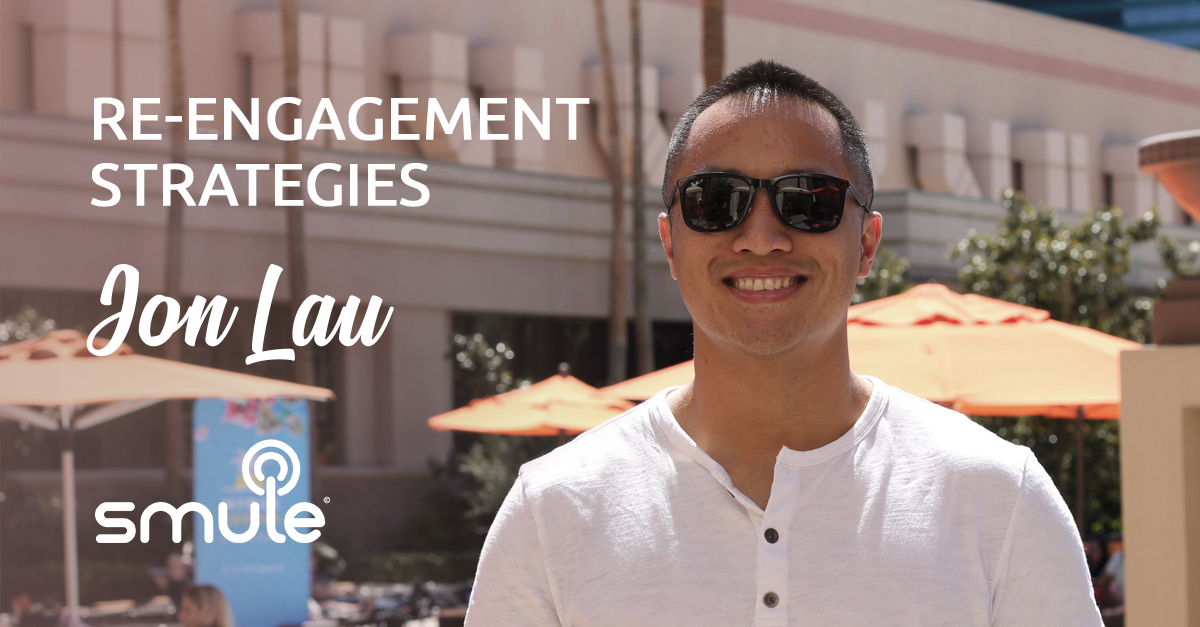As a Director of User Acquisition at Smule, a singing and music app, Jon Lau believes in a full-funnel approach to mobile marketing, where user acquisition and re-engagement are pieces of the same puzzle. Recently, Smule re-organized its UA, CRM, Influencer, and Content teams under a new department called the “Growth Marketing Group.” We caught up with Jon to learn about his approach to re-engagement and tips he has for measuring success.
What channels do you use to re-engage your users?
We use both free and paid channels, including email, push notifications, Facebook, Google, and programmatic partners like Liftoff. When I think about re-engagement, I consider the full mobile user journey and user intent. The channels are secondary; the important part is to understand where users are in their life cycle so we can design the most relevant experiences and messages for them.
How do you approach audience segmentation?
The first question is, “what’s the goal?” For example, Smule is a singing app. We have users who join the app to sing and those who join to listen to other people sing. Some people want to sing on their own, while others want to have an audience. When I re-engage someone who is a listener, I might want to showcase new content from people doing cover songs. For someone who is a singer, I’ll show new songs to choose from. Each user wants something different and our goal with re-engagement is to be relevant.
What are the key A-events that you are looking to target for each audience segment?
Of course, we want to drive incremental revenue through subscriptions. At the same time, we are just as focused on user engagement. Both aspects are equally important as we continue to drive growth.
What is your strategy for using blackout windows to not cannibalize your UA?
You can minimize the risk of campaign cannibalization through proper suppression and selecting the right audiences for retargeting. You can also set up various attribution windows depending on the campaign type. However, using blackout windows correctly still requires a lot of testing, something we as an industry have yet to fully figured out.
What are some creative best practices for re-engagement?
To design effective creative for re-engagement, we need to understand why the user left. For example, when I worked on a social casino app, users quit the game for very different reasons. Some people went on a losing streak, lost all their chips, and rage-quit. Other users had a high chip balance, but left out of boredom. It is important to cater your creatives with value propositions that is relevant for each user type.
What is an example of a highly successful creative?
A highly successful creative is relevant and personalized. Going back to the social casino example, if a user lost their chips, you might want to show them a bonus offer. At the same time, if someone left because they were bored, you might want to show them fresh content.
What impact, if any, has your re-engagement campaigns had on user acquisition?
Through proper suppression, we minimize the risk of targeting the same user twice and saw the cost of acquiring a user go down. However, looking at retargeting separately, the cost of reactivating a user has actually gone up slightly. That’s not an issue as long as we are seeing the incremental effect of re-gaining that user.
What are your top 3 tips for running re-engagement campaigns?
First, before you spend a single dollar, define your goals. Instead of saying, “I want this user to come back” or “I want to measure incremental revenue,” you need to focus on the user lifecycle and what exactly you are trying to achieve.
Second, never assume that you know everything. As the industry evolves, more tools become available that allow us to accomplish our goals more efficiently, including programmatic partners like Liftoff.
Third, have conversations with your peers in the industry, including marketers in different verticals. Coming from a gaming background, I interact with a lot of people in e-commerce or ride-sharing. Learning about their way of looking at the same data helps me find new perspectives.
